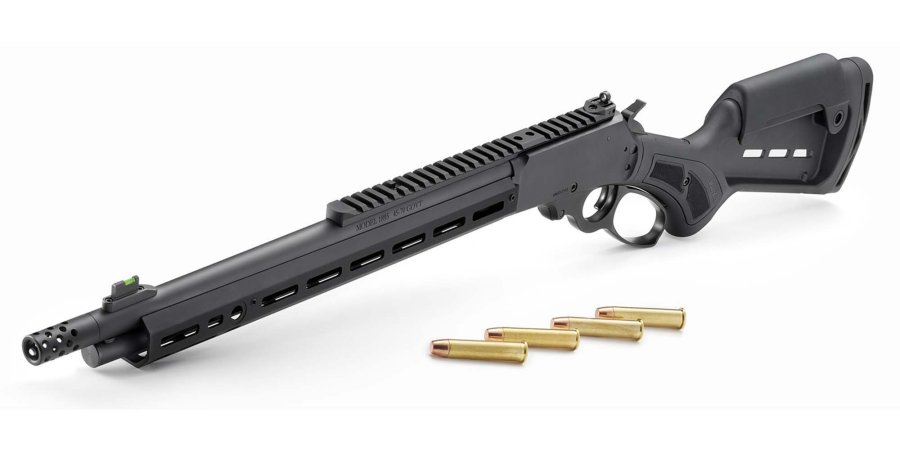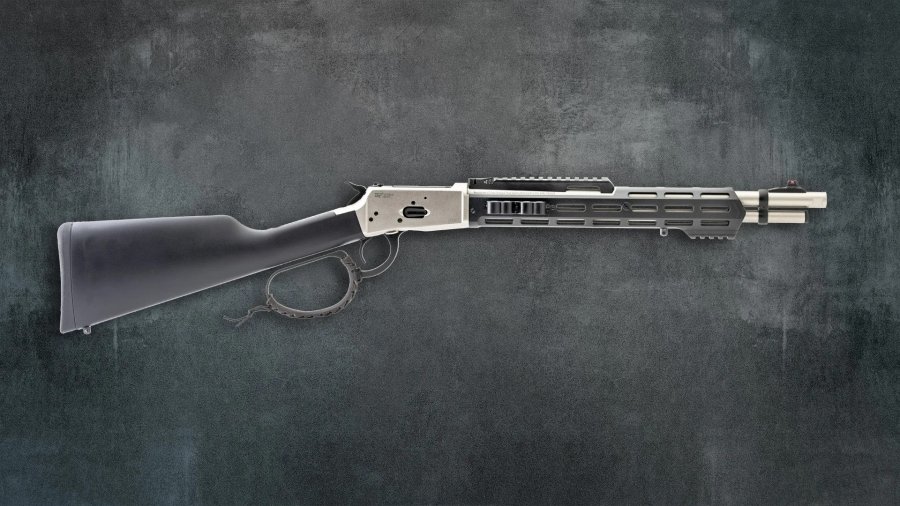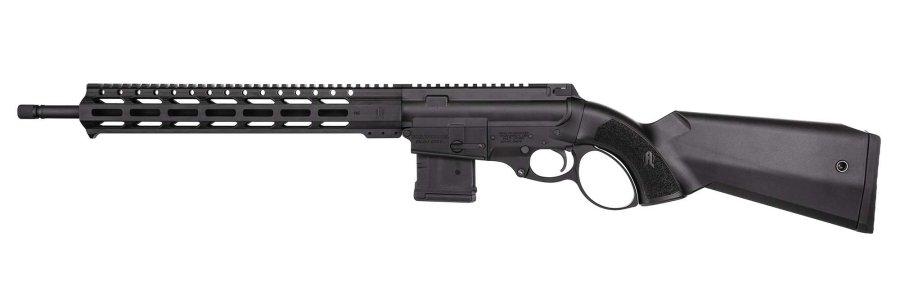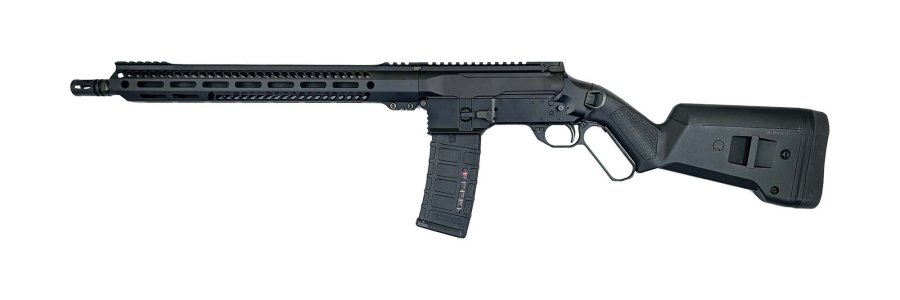It is well known that in the civilian and sporting firearms sector, the role of trend setter belongs to the US market. Even European manufacturers, when they have to decide which products to develop, take market indications coming from overseas into great consideration. This explains why many of the gun makers in the Old Continent hold concealed carry pistols – a type of firearm that for a whole range of political and cultural reasons is in decline on the European market but arouses great interest in the USA – in high regard.
Sometimes in the USA some fad takes off that is hard to understand for us, but that has some political explanation: take the rediscovery of lever-action rifles as an example. In the -USA, they have always enjoyed great popularity, but in recent years they have literally become an obsession, so much so that even a legendary name in the American gunmaking world, Smith & Wesson, presented its Model 1854 lever-action rifle in .44 Magnum, "only" 170 years after the Volcanic, one of the first lever-action guns ever made. This renewed interest in lever-action rifle is not to be attributed to a rediscovery of tradition, but rather to the widespread fear that the next US president might finally succeed in making semi-automatic rifles illegal, or at least much more hard to purchase. Probably nothing will happen, since the US can boast a long series of presidents who on paper would have banned the dreaded "assault weapons you can buy even from a superstore", and then did nothing concrete. But better be prepared. If in Europe the rediscovery of lever-action guns is closely linked to the undeniable quality of certain products in particular (take Pedersoli's Boarbuster for example), in the USA it is a combination of commercial, social and traditional factors.
Lever-action rifles in the new US market

The fact is that in the USA lever-action rifles have never ceased to be popular: suffice it to say that a company like Marlin, founded in 1870, still survives today manufacturing a handful of lever-action rifles based on the same mechanical scheme, that of the 1894 model, the original design of which is more than a hundred years old. After closing down for a short time due to the bankruptcy of Remington group, to which it belonged, the brand made a comeback after being acquired by Ruger and is enjoying good health thanks to some aesthetically striking versions such as the Dark models, which have been a success with the public. Henry, another brand historically linked to Old West saga lever-action rifles, also presented at the SHOT Show 2024 the Supreme lever-action rifle, featuring an internal hammer, fully closed receiver and removable AR-15-type magazine, but several months later its official website lacks any mention of this novelty. Winchester, on the other hand, seems to be less interested in this market segment, and in 2024 limited itself to offering a .22 Long Rifle model, the Ranger, which does not really present anything particularly interesting compared to similar models already on the market.

The current market trend is also based on terms that are like a mantra on many companies' websites: budget-friendly or affordable. War is also won with low prices, so in the USA we often see lever-action rifles (but not only) at prices that are quite inexpensive, and with rather simple adaptations. One example is the Huckleberry LTAC lever-action rifle made by Gforce Arms in .357 Magnum, featuring an aluminum receiver, a standard profile wood stock (also available in a synthetic version) and a fore-end directly taken from a Black Rifle, that is with Picatinny rails and M-Lok interface. The rifle wears adjustable sights with fiber optic inserts and an additional Picatinny rail that allows the mounting of a long-focus optic or a red dot. The lever loop is oversized and covered with Paracord wrap (which is very "Survival-like" at almost no cost). Retail price of the Huckleberry is about $700 (about the same price in euros): all in all more than reasonable. The advantage of the Huckleberry LTAC lies mainly in the large capacity of the tubular magazine: 8+1 rounds that make it an interesting choice for home and territorial defence, somewhat less so for hunting. However, it is a good example of an effortless upgrade of a traditionally designed gun to meet "Tacticool" tastes.

Lever-action rifles with box magazines
Relatively young companies such as FightLite go a little further with the contamination between different types of rifles, proposing models such as the Herring 2024 in .223 Wylde, with lever action and a detachable AR-15-type box magazine. The rifle is compatible with many accessories designed for the "Black Rifle" par excellence. It should be noted that the .223 Wylde is not an actual cartridge, but a special chamber that eliminates any compatibility problems between .223 Remington and 5.56x45 cartridges. The .223 Wylde chamber therefore has the dimensions and angling of the 5.56x45 but with a .223 Remington freebore diameter.

Mechanically, the FightLite Herring 2024 uses a rotating bolt, like an AR-type semi-automatic rifle, but the bolt carrier is cycled by the manually-operated cocking handle; the rifle accepts all AR-15 (STANAG) magazines with a capacity of 5, 10, 20, 30, 40, 60 and 100 rounds. Being chambered in .223 Wylde and .300 BLK, Herring 2024 semi-automatic rifles can be adapted for almost any AR caliber, from 6mm ARC to .450 Bushmaster. With some conversion kits and magazine adapters, the Herring 2024 can be chambered in .22 LR rimfire, as well as 9mm, 10mm, .45 ACP and 5.7×28.
It should be noted that the lever action forces the user to give up two of the elements most frequently customised by AR-15 users, namely the pistol grip and the stock. In the case of the Herring, we find fitted as standard a synthetic stock specially developed by the American specialist Fightlite, which fits perfectly into the rounded profile of the cocking handle and is available in black or sand.
The barrel of the Herring 2024 is 16.25 inches (41 centimetres) long and has a threaded muzzle for mounting a silencer. The barrel is made of aluminum, with the now indispensable M-Lok accessory interface and a Picatinny rail that allows any mechanical, optical or opto-electronic sight to be mounted. The list price of the Herring 2024, which should arrive in American gun shops by the end of this year, is $1,700 dollars, equivalent to about 1,500 euros – but who knows if and when it might come to Europe.
Admittedly, the idea of feeding a lever-action rifle from a centrally positioned box magazine is not a new one, as Winchester had already thought of it with its 1895 model, but it was never taken up seriously thereafter. And yet, a lever-action rifle fed from a box magazine has some undeniable advantages. The first one is obvious: you can use pointed bullet ammunition, which in a tubular magazine would be dangerous, since under the effect of recoil the bullet tip could hit the primer of the next cartridge. But that is not all: eliminating the tubular magazine positioned under the barrel significantly reduces the gun's overall weight. Moreover, the fact that in a tubular magazine rounds are in a single file means that by firing them, with each shot and as the magazine empties, the balance of the rifle changes, even noticeably, interfering with accuracy. With a .22 LR rifle, the effect is negligible, but when firing heavy cartridges such as .44 Magnum rounds, the effect is more pronounced. By taking cartridges from a box magazine positioned close to the rifle's centre of gravity, this effect is minimized.

LVRB rifle from Bond Arms
Bond Arms goes even further with its LVRB model, which has already been informally shown at a few US trade shows. Again, this is in fact an AR-15-style rifle in which the lower receiver is modified to allow the lever cycling, but everything else is 100% interchangeable with Black Rifle accessories. Manufacturer Bond Arms speaks of total compatibility with the AR-15 platform in critical components for caliber change, including barrels, bolt and magazines. In addition to this, there is a further opportunity to eliminate the gas-operated system and move the sights almost an inch and a half closer to the barrel axis. A great deal of work has also been done on the geometry of the cocking handle, since Bond Arms engineers realised that it is not easy to cycle a thirty-round magazine with a lever gun. Therefore, a mechanism was designed and patented that allows a cocking handle with a relatively short throw to chamber and extract the cartridge cases reliably, even when using high-capacity magazines. The lever loop will be available in different shapes, which can be easily customised thanks to a dovetail joint. The LVRB from Bond Arms, does not require a specific stock, but is compatible with all Remington 870 aftermarket stocks.

Bond Arms LVRB lever-action rifle has so far been offered in .223 Wylde chambering and will also be available in .300 Blackout, .450 Bushmaster, .350 Legend and all other calibers compatible with AR-15-type bolt-action. The list price is approximately $1,600 (1,400 euro). The LVRB will most likely be officially unveiled at the upcoming 2025 SHOT Show in Las Vegas.


